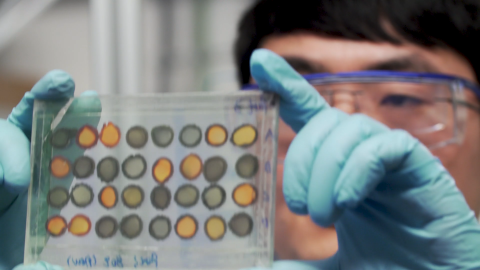Perovskite solar cell with ultra-long durability
Perovskites are the greatest hope for the solar modules of the future. Until now, the biggest obstacle for practical use has been the short lifetime. Yicheng and co-authors presented the solar cell that impresses with its extraordinary stability. The illuminated cell survived 1450 hours at elevated temperatures around 65 degrees Celsius in the
laboratory and remained largely stable throughout the entire test period! At the end, it still had 99 percent of the initial efficiency. “A long-term prognosis is always difficult. But the perovskite solar cell we have now developed could certainly be operated for over 20 000 hours under normal circumstances,” estimates Prof. Brabec. To find the right material, hundreds of different perovskite mixtures were systematically tested for their suitability using high-throughput methods. The researchers then used the best ones to build their cells.
“To improve stability at the contact point, we packed the entire electrode in a kind of protective shell,” says Yicheng. A new double-layer conducting polymer structure, the bottom side of which is undoped and the top side doped with a non-ionic dopant. On the one hand, this architecture protects the very sensitive interface of the perovskite and, on the other hand, enables extraordinarily stable ohmic contacts, even at elevated temperatures.

